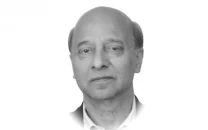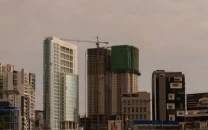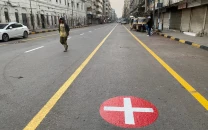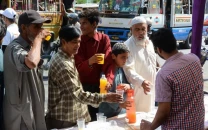The dilemma of rural to urban migration
Rural-to-urban migrations often stem from desperation.

Mir Delhi Se Nikle, Gaye Lucknow;
Tum Kahan Jao Gai Hum Kahan Jayin Gai. — Jaun Elia
Migration is often painful and leaves one in despair. The sorrow and dread of migrating from his beloved city Dehli remained with Mir Taqi Mir till he breathed his last. However, at times, migration becomes an inevitable necessity, a cruel twist of fate one must endure.
Thousands in Pakistan migrate yearly with heavy heart, like Mir. Their reasons, however, differ. Most migration occurs from rural to urban areas. With 61.18% of Pakistan's population residing in rural regions, the urban share has increased significantly. Between 1998 and 2023, the urban population grew by 118%, while rural growth was only 65%. But why do people leave their communities and migrate to cities?
Rural-to-urban migrations often stem from desperation. People in rural areas migrate to access basic necessities like clean water, healthcare and education. Urban areas also offer better income opportunities; the average monthly income in urban areas is twice that of rural areas.
Moreover, disparities in education are stark. Of the 1,932 intermediate-colleges and 2,573 degree colleges in Pakistan, only 32.3% and 21.5%, respectively, are in rural areas. With over 3.4 million students enrolled at intermediate and graduate levels, rural colleges face immense pressure.
The student-to-college ratio for intermediate-colleges is 1.7 times higher in rural areas, while for degree colleges, it is nearly double compared to urban areas. Libraries, too, are scarce in rural areas, with only 4.7% of the population having access compared to 38% in urban areas. Consequently, many migrate to cities for higher education.
The poor quality of life in rural areas is another significant factor. Millions in rural Pakistan lack basic utilities. Out of 23.27 million rural households, over 5.4 million rural households lack electricity, and 82.6% rely on firewood or other sources for cooking instead of gas.
Sanitation issues are widespread; 19.5% of rural households lack toilets, and 11.3% lack improved drinking water. By contrast, only 3.2% of urban households lack improved water sources. This disparity fosters a sense of deprivation, leading families to believe migration is the solution.
However, does migration solve these problems? While migrants gain access to basic necessities like electricity and gas, new challenges emerge. Securing jobs in cities is tough due to intense competition. Many migrants fail to join the urban labour force, with 28% of unemployed individuals in urban areas holding bachelor's, MPhil, or PhD degrees.
Even when jobs are secured, the high cost of living offsets the income advantage. Monthly rent in cities like Islamabad and Lahore ranges from Rs30,000 to Rs300,000, depending on location. The average household income in urban areas is Rs53,010 compared to Rs34,520 in rural areas, but urban households spend Rs47,362 monthly on average, compared to Rs30,908 in rural areas. This narrow income-expenditure gap often disillusions migrants.
Despite foreseeing these challenges, some migrate in hopes of better lives, driven by the socio-economic disparity between rural and urban areas. To address this, the government must reduce these disparities by uplifting rural areas.
Increased investment in human development, education, healthcare and infrastructure is essential. When rural living conditions improve, migration pressures will ease, and urban sprawl can be controlled. Ultimately, people will no longer have to leave their communities for better opportunities.














COMMENTS
Comments are moderated and generally will be posted if they are on-topic and not abusive.
For more information, please see our Comments FAQ